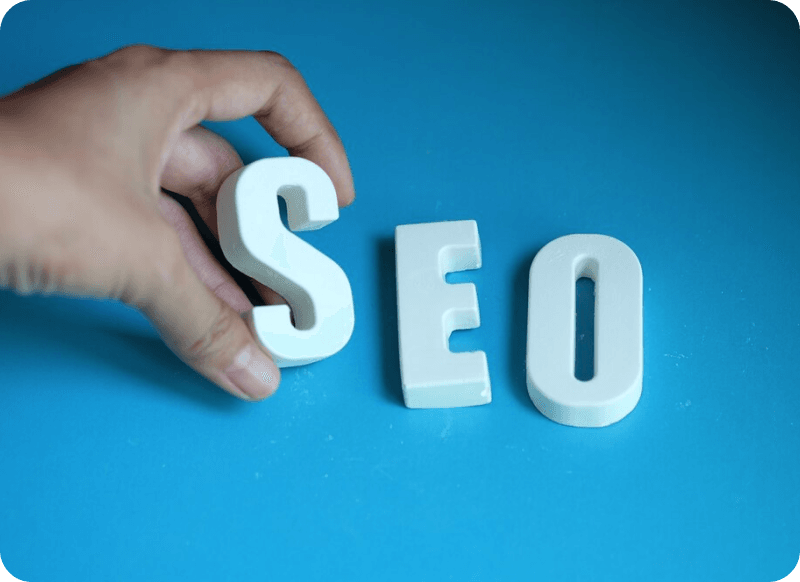SEO optimization
Marketing strategies
Data analytics
Performance optimization
SEO vs SEM: What’s the Difference and Why It Matters for Your Website
Vitality Kovalev
2024-08-27
When it comes to online marketing, two of the most commonly confused terms are SEO and SEM. Both are critical strategies for improving a website's visibility, but understanding the difference between the two can help you craft a more targeted approach to website growth.

What is SEO Optimization?
SEO optimization stands for Search Engine Optimization, a set of techniques designed to improve your website's organic ranking on search engines like Google. Organic results are those that appear naturally in search engines, without being paid for. SEO website optimization focuses on enhancing the quality and quantity of website traffic by making the site more relevant and trustworthy in the eyes of search engine algorithms.
The core components of SEO optimization include:
- On-page SEO: This involves optimizing individual pages on your website. It includes the use of targeted keywords, meta descriptions, headers, and URL structures. Quality content and proper keyword placement are crucial for this step.
- Off-page SEO: This refers to external factors that influence your website’s ranking. It includes activities like backlink building, social media marketing, and influencer outreach.
- Technical SEO: This aspect focuses on the backend of your site, ensuring it runs smoothly and meets the technical requirements set by search engines. Website speed, mobile optimization, and secure HTTPS encryption fall under technical SEO.
What is SEM?
SEM (Search Engine Marketing) goes a step further. While SEO is a free, organic way to grow your traffic, SEM involves paid strategies. It includes tactics such as pay-per-click (PPC) advertising, where you bid on keywords to display ads for your website at the top of search engine results pages (SERPs). While SEO can take time to show results, SEM offers faster visibility by placing your website directly in front of users searching for relevant terms.
The key components of SEM include:
- PPC campaigns: Paying for ad placement in search results.
- Keyword bidding: Choosing the right keywords to target through ads.
- Ad creation: Crafting compelling ads that attract potential customers.
- Performance tracking: Monitoring the success of campaigns through metrics like click-through rates (CTR) and conversion rates.
SEO vs. SEM: Key Differences
While both SEO website optimization and SEM aim to increase your site’s visibility, they operate differently. Here are the key distinctions:
- Cost: SEO optimization is technically free but requires time and effort. On the other hand, SEM involves paying for traffic through PPC ads.
- Timeframe: SEO results take time to accumulate and are often seen as a long-term investment. SEM, however, provides immediate results once you launch a campaign.
- Sustainability: SEO is more sustainable in the long run. Once you establish strong SEO, you can maintain high rankings with regular updates. SEM traffic stops as soon as you stop paying for ads.
Why SEO Optimization is Crucial
For most businesses, SEO optimization is an essential aspect of their digital marketing strategy. Here’s why:
- Cost-effectiveness: While SEO takes time, it's more cost-effective in the long run compared to SEM. Once your site ranks highly, it can bring in continuous traffic without additional costs.
- Credibility and trust: Users trust organic results more than paid ads. SEO website optimization helps you build authority and trust with your audience.
- Better user experience: Optimizing for SEO often leads to a better user experience because search engines reward sites that are easy to navigate and mobile-friendly.
When to Use SEM
Although SEO optimization should be a cornerstone of your strategy, SEM is beneficial for certain scenarios:
- New websites: If you’re just starting and need traffic fast, SEM is the best choice. A solid PPC campaign can help you drive visitors to your site immediately.
- Time-sensitive offers: SEM works well for promotions, sales, or events where you need immediate visibility.
- Highly competitive industries: In some industries, ranking organically can take months or even years. SEM gives you a way to compete with established players right away.

Combining SEO and SEM
Combining SEO and SEM for Maximum Impact
The most effective approach is often a combination of both SEO optimization and SEM. Here's how to make them work together:
- Start with SEM for immediate results: When launching a new site or campaign, SEM can provide instant visibility and help you generate leads while your SEO strategy is still gaining traction.
- Transition to SEO for long-term growth: As your SEO efforts start to yield results, you can scale back on SEM spending. Over time, your goal should be to rely more on organic traffic while keeping SEM in reserve for specific, targeted campaigns.
- Use SEM data to inform SEO: One of the key benefits of SEM is the data it provides. You can see which keywords drive traffic and conversions, then use this information to refine your SEO optimization strategy.
Practical Tips for Effective SEO Website Optimization
- Conduct regular keyword research: The foundation of any good SEO strategy is knowing which keywords your audience is searching for. Use tools like Google Keyword Planner, Ahrefs, or SEMrush to identify valuable search terms.
- Optimize content for search intent: It’s not enough to just include keywords in your content. Your pages should provide real value and answer the questions users are asking.
- Build high-quality backlinks: Backlinks from reputable sites signal to search engines that your site is trustworthy. Focus on creating shareable, valuable content to attract backlinks naturally.
- Improve website speed and performance: Page load time is a critical ranking factor. Tools like Google PageSpeed Insights can help you identify areas for improvement.
Both SEO optimization and SEM play important roles in driving traffic to your website, but understanding their differences will help you allocate your resources more efficiently. While SEO website optimization is a long-term investment in organic growth, SEM provides a fast track to visibility. The key is knowing when and how to use each strategy based on your business goals.
By effectively combining SEO and SEM, you can maximize your website’s potential, reaching your audience both in the short term and for the long haul.